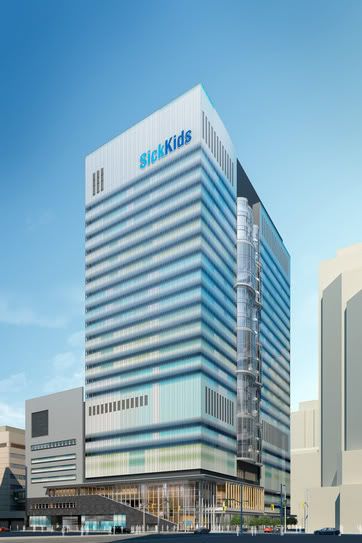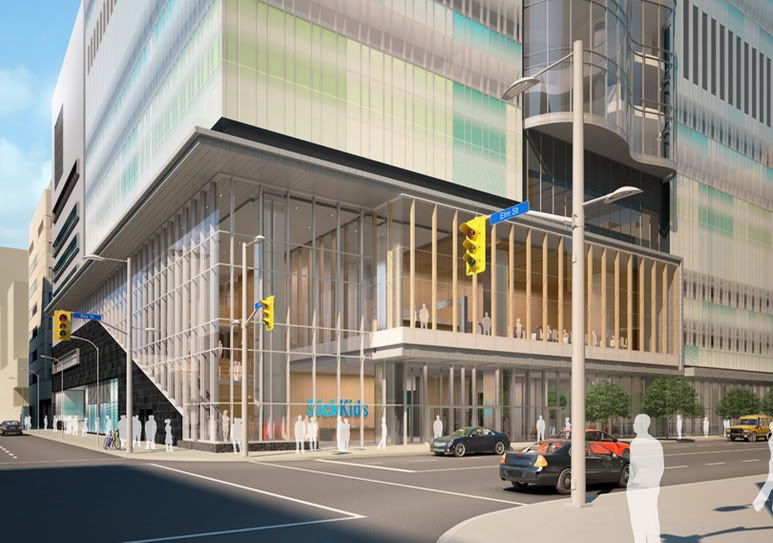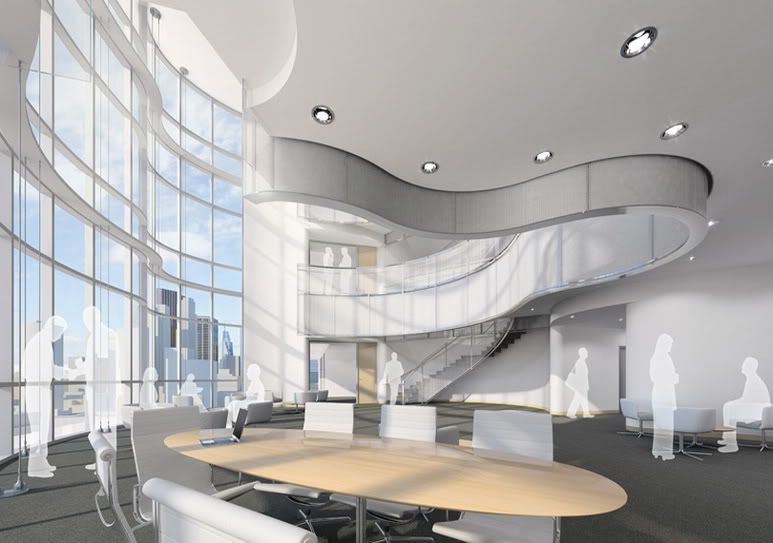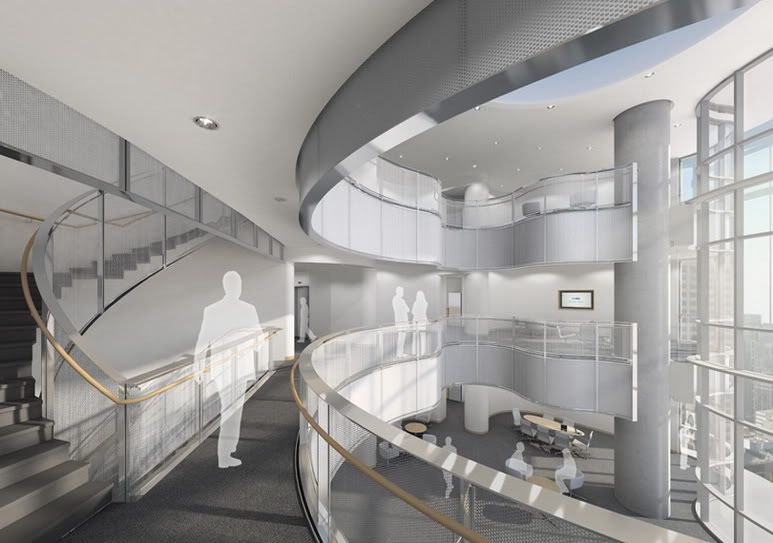Bay & Elm (Northwest corner)





______________________
pictures posted by ProjectEnd on urbantoronto.ca
______________________
TORONTO'S HOSPITAL BOOM
'One of the life-science capitals of the world'
Toronto's not there yet. But a multimillion-dollar building spree could catapult the city's hospitals ahead of international competitors
IVOR TOSSELL
Special to The Globe and Mail
September 27, 2008
Wedged as it is between some concrete condos and a giant steam tower, the parking lot at the corner of Bay and Elm seems a dead place for life science.
But the life sciences are coming, and on a scale that has hardly been seen in the city before. The site is set to become the home for a 24-storey research building for the nearby Hospital for Sick Children. Tall enough to rival the nearby Delta Chelsea Hotel, it will announce the return of health-care construction in concrete terms.
The Hospital for Sick Children isn't alone. In fact, it's the rare Toronto hospital that doesn't have a major construction project on the books these days. Spurred on by recently opened funding taps, outsized private donations and pent-up demand, Toronto is witnessing a health-care building boom the likes of which it hasn't seen in decades. Over the next five years, three new major research centres will rise downtown, and well over a thousand beds will be added as old hospitals are rebuilt, wings are added and whole new buildings are constructed.
"In Ontario, the infrastructure was in dire straits," says Connie Dejak, the president and chief executive officer of Runnymede Healthcare Centre. Specializing in chronic neurological diseases, the west-end centre moved into a turn-of-the-century school building in 1946 and, she says, has hardly been upgraded since. Next year, however, it will move into a new four-storey building that has risen in the schoolyard.
The Ontario Hospital Association says the average age of Ontario hospitals has reached 40 years. According to a 2003 report that the OHA commissioned, it would take $8.4-billion to modernize and expand the province's health-care facilities enough to meet demand.
To bridge the gap, Dalton McGuinty's government altered the funding formula for hospital construction and turned to what are delicately called "alternative financing models." Designed to make developers responsible for cost overruns, the "public-private partnerships" ignited fears among public-sector advocates that hospital services - in whole or in part - would pass into private hands. Under the current model, says the OHA (which has been an enthusiastic proponent of so-called "P3s"), the province retains ownership of building and health care alike.
Construction cranes sprouted. Runnymede is just one of more than a dozen hospital projects that are either under way or being actively planned in the Greater Toronto Area. Some, such as the giant Humber River Regional Hospital that is scheduled to rise in Downsview in a few years, will be built from scratch. Others, such as the floors being built above Sunnybrook's main wing, will house specialized neonatal care units and research space.
In many cases, it's not just a matter of making room for more beds, but changing the way space is used in the first place. New technology requires more space in some places - such as by the bedside, where larger monitors and pumps sit - and less space in others, such as chart-storage rooms that are being replaced by digital libraries, accessed by hand-held computers.
"The whole model of care has shifted over the years," says Rob Devitt, the CEO of Toronto East General, which is in the first stages of a long-term redevelopment. As more minor ailments are treated as outpatient procedures, he says, the people filling up in-patient slots tend to be sicker.
The need for better infection control is driving hospital design, from adding hand-washing stations to rethinking bathroom design. In the new neonatal units being built at the top of Mount Sinai's University Avenue tower, for instance, each baby will be isolated in its own room, which has the bonus of giving families extra privacy.
More laboratory space
At the same time as clinical care expands, Toronto's downtown core is undergoing a boom in laboratory space. Despite the formidable corridor of research hospitals on University Avenue, hospital executives say Toronto lags behind biomedical centres such as Boston and San Diego. The city is still relatively weak in the field of large-scale clinical trials. And the commercial biotech sector - critical to getting innovations to patients - is nascent.
As Ilse Treurnicht, the chief executive of MaRS Discovery District, points out, Toronto has yet to see a pharmaceutical company here hit it big, then spin off smaller companies.
"We aren't great right now," says Bob Bell, CEO of the University Health Network.
The three dedicated research buildings being planned or under construction at downtown hospitals will help Toronto emerge from Boston's shadow as a world power in life-sciences research.
As Janet Rossant, Sick Kids' chief of research, says, "This is a once-in-a-lifetime opportunity for the hospital and the city."
The Hospital for Sick Children Research Institute has a storied past; among other breakthroughs, it was most recently involved with the game-changing discovery of cancer stem cells. As Dr. Rossant points out, many illnesses that affect children begin in the womb and stretch into later life, meaning that the research ultimately affects everyone.
The new Elm Street building, which will give Sick Kids a physical presence to match, will bring together the hospital's 230 principal investigators and 2,000 research staff, currently scattered across six sites. The lower floors will be dominated by public spaces: stores, lecture halls and auditoriums.
But the design is about more than size (although, at more than 650,000 square feet, there's plenty). The designers are embracing the latest trend in hospital design: "multidisciplinarity." By bringing different fields of research under one roof and breaking down walls, the hope is that cross-disciplinary sparks will fly.
To do that, architect Donald Schmitt of Toronto firm Diamond + Schmitt Architects Inc. describes a series of "neighbourhoods" rising up along the building's colourful façade, multifloor gathering spots for researchers from various disciplines, encased in curving glass. "Traditionally, labs were seen as functional spaces, buried in the bowels of the buildings," Mr. Schmitt says. But here, in what is an unusually direct form of public outreach, the researchers themselves will be on display.
"You'll be looking at the scientists scribbling on a whiteboard, or drinking a cup of coffee and waving their hands as they get excited about the project," says Dr. Rossant.
Towers of power
Sick Kids joins the ranks of other hospitals investing in multidisciplinary-research operations. The UHN is in the process of planning a 250,000-square-foot research tower on the site of Toronto Western Hospital on Bathurst, scheduled to open in 2012.
"Despite the brilliance and productivity of the folks there, they're basically working in converted in-hospital patient units built in the 1960s," the UHN's Dr. Bell says.
Meanwhile, across from St. Michael's Hospital on Shuter Street, the Li Ka Shing Knowledge Institute is already under construction. To be composed of two linked buildings, the nine-storey complex will focus not just on basic science, but also on "knowledge translation" - getting research results implemented on a day-to-day basis at patients' bedsides.
"Let's say we do a study here and show that Drug A is great for asthma, and then we publish it in a journal," says Art Slutsky, vice-president of research at St. Michael's. "But then how do we get all the doctors and nurses out there who would benefit actually using this new approach?"
The ongoing research programs about street life and inner-city health conducted at St. Mike's, which has always been the inner-city hospital, even among its downtown colleagues, will also be run through the new institute.
Jobs like these are as much social science as life science, bringing together sociologists, physicians, statisticians, geographers. The Li Ka Shing institute will also feature "pods" designed to encourage the rubbing of interdisciplinary shoulders. (It is also a project of architect Mr. Schmitt's.)
Dr. Bell believes the surge in interdisciplinary research - and the drive to bring it from labs to bedsides - could make Toronto "one of the life-science capitals of the world."
That capital, for now, is well under construction.
The money trail
How do you fund a laboratory building boom? Patience helps. Both the Hospital for Sick Children and University Health Network lab projects are being funded in part by federal money that was set aside by Jean Chrétien's government in 2003.
Hospitals competed for the allocation, which totalled more than $500-million, and is administered by the Canada Foundation for Innovation.
UHN's Krembil Discovery Tower won $92.2-million, while the Hospital for Sick Children won $91.1-million; smaller projects at Sunnybrook Hospital and the Centre for Addiction and Mental Health also got tens of millions.
Eliot Phillipson, the CFI's president, explains that the process of negotiating matching funds from the provinces, combined with the onerous application process, helped to keep the funds tied up until recently.
Local projects have also benefited handsomely from big-ticket donations - a source of funding that may prove more elusive as would-be philanthropists close their wallets in uncertain financial times.